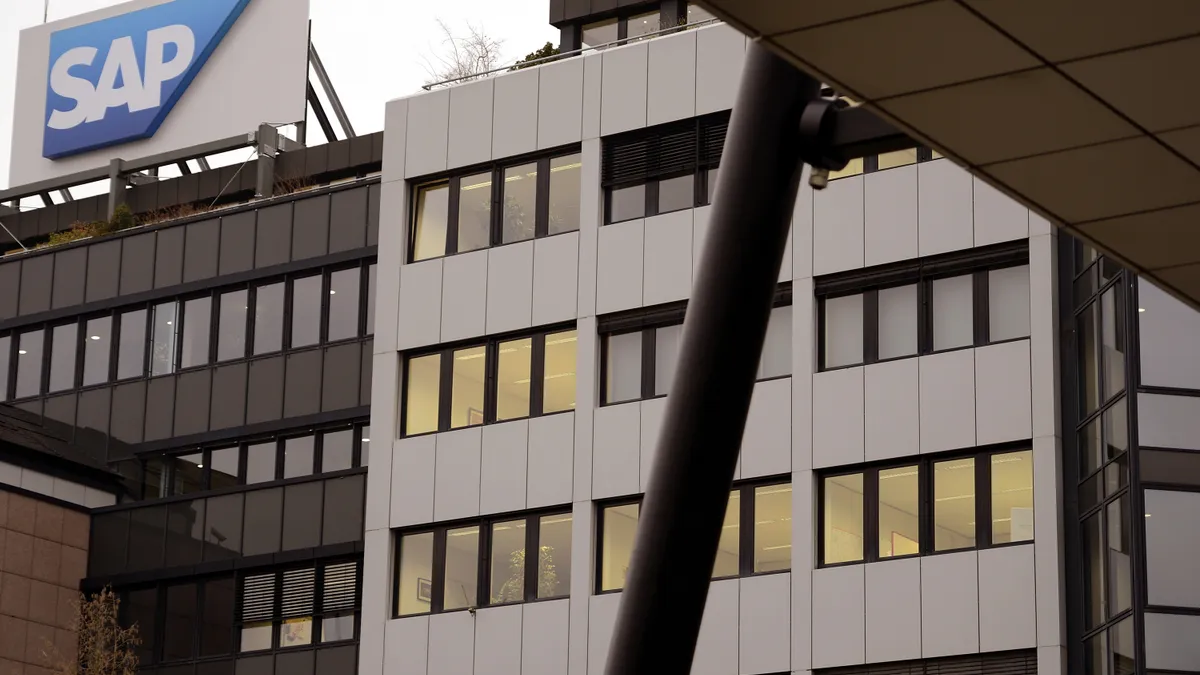Dive Brief:
- SAP revamped its migration incentives programs Tuesday, offering credits to offset the adoption cost of the company’s cloud-based ERP solutions. Customers enrolled in the RISE with SAP and GROW with SAP SaaS programs are eligible for credits that can cut the cost of migration by half, through the end of the year, the announcement said.
- Customers can use credits to cover maintenance costs, subscriptions and cloud services, or toward “risk assurance services for the more complex customers who have to ready their existing environment, look at custom integrations and modifications and make sure nothing breaks as they do the migration,” David Robinson, president of RISE with SAP, told CIO Dive.
- As part of a broader restructuring strategy, the software company ramped up technical support to ease migrations and drive predictable adoption timelines. The company also implemented a Cloud Safekeeper program that provides legacy ERP customers with upgrade and patching services for two years while they transition to cloud-based solutions.
Dive Insight:
As SAP shifted from a licensed on-prem software delivery model to SaaS, some customers balked at the cost, complexity and potential business continuity risks associated with ERP systems modernization.
“We had a lot of customers that were faced with a decision point,” Robinson said. “They wanted to modernize into the cloud and they could see a path to doing that commercially and from a technical perspective but they had a competing priority, which is the continuity of their existing business.”
In support of the initial shift to SaaS, the company launched RISE with SAP, a managed service to help on-prem customers migrate, in 2021. GROW with SAP, an onboarding service for midsize companies, was added last year.
To further accelerate cloud adoption among current customers and steer new business to its SaaS products, the company identified three areas for incentives and assistance, according to Robinson: cost, process and skills.
“This announcement takes what we know worked well for customers that successfully transformed in the last 12 to 18 months and puts it into a program that is available to the broader market,” Robinson said.
Customers using older versions of the SAP S/4HANA ERP will now have two years to complete their full migration, during which they will receive business continuity services.
“What we've learned is that there's a benefit in being very prescriptive with certain details in order to make sure we have something that’s standardized and scalable and repeatable,” Robinson said. “But we also need to provide some agility within the program because every customer has a different starting point and every customer’s transition progresses at a different pace.”














